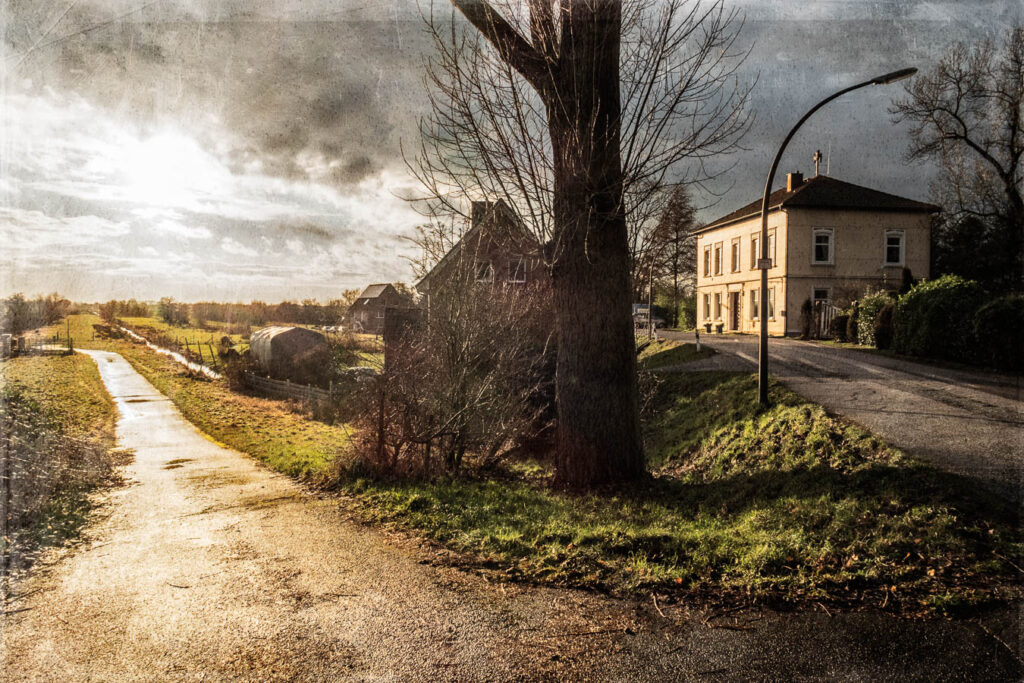Estimated reading time: 3 minutes
Vier- und Marschlande Cultural Landscape in Hamburg
My Vierlandenproject

When I started my Vierlandenproject in the summer of 2016, it had no defined goal and no defined end. It arose from the fact that I needed a kind of “training ground” where I could try out new ideas, camera angles and lighting situations. And since I live in the Vier- und Marschlanden myself, all I had to do was walk out the door and I was on my “training ground”. This led to the idea for this project in 2016. From then on I had more and more pictures from our beautiful area and the idea of perhaps developing a series from them matured. At some point I also began to specifically produce images for the project and initially edit them in different ways. Sometimes one way, sometimes another, just go for it.
Series „Vierlande wet“
In the meantime, my image and editing ideas have of course become more concrete. When processed, you get a look that is reminiscent of wet plate photography at the beginning of photography. The look is characterized, among other things, by delicate patterns in the image. I recreated these patterns in digital post-processing. Some stronger, some less strong. I have now completed the first series of the project, which I named “Vierlande wet”. By the way, the series name referes to wetplates.
The next picture ideas have of course already been born and I’m already working on a second series, which will be slightly different from “Vierlande wet”.
About Wetplates
In the early days of photography, when analog negative film had not yet been invented, film plates were used to create images. Glass plates were used that were coated with a light-sensitive emulsion. The plates were coated in various ways. The different layer thicknesses (related to the process) gave the images their characteristic look: the emulsion or layer was clearly visible in the image.
I bring this look into many of my pictures, although almost all of them were taken digitally. A few were captured on film analogue, but none were captured on glass using the original method. I create the wet plate look exclusively in digital post-processing, whereby I also limit myself to the textures of the emulsion. I also regularly ignore the other characteristics (color sensitivity, depth of field). I even process color images in this way, which cannot exist in the original process because color negative film had not yet been invented at that time.
